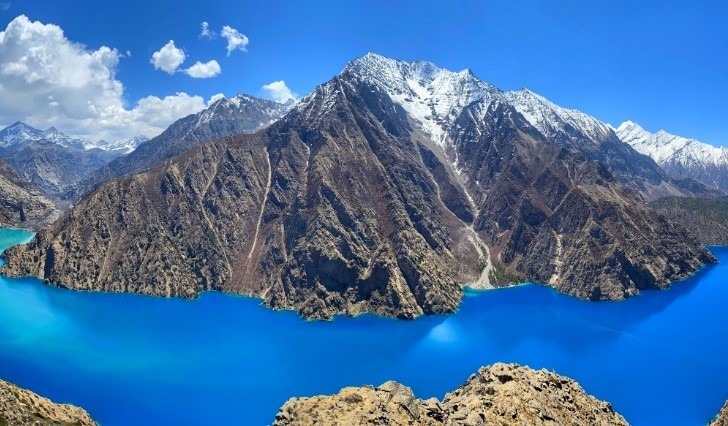Introduction
Rising majestically across Nepal’s northern expanse lies the Himalayan region—the most iconic and awe-inspiring part of the country. Covering about 15% of Nepal’s land area, this zone is where the sky touches earth via colossal peaks, sacred traditions, and rare biodiversity.
1. Geography & Terrain
- The Himalayan zone spans elevations from 3,000 m up to 8,848 m, including world-renowned giants like Mount Everest, Kanchenjunga, Annapurna, Dhaulagiri, and Manaslu.
- It forms the northernmost spine of Nepal, forming rugged terrain with glaciated peaks, alpine passes, and sacred valleys.
2. Ethnicity & Spiritual Heritage
- Only around 7% of Nepal’s population lives here, but their cultures—rich, resilient, and historically deep—are immensely significant.
- Tibetan Buddhism shapes landscapes through monasteries, prayer flags, chortens, mani walls, and stupas. The spiritual vibe is as elevated as the altitude.
3. Biodiversity & Conservation
- The region includes protected areas like Sagarmatha National Park, a UNESCO World Heritage Site that stretches from the Dudh Kosi valley to the summit of Everest, hosting rhododendrons, alpine forests, and rare wildlife like snow leopards and musk deer.
- Other conservation sites include the Gaurishankar Conservation Area, rich in ecological diversity with 34 mammal species (like snow leopards and red pandas) and 235 bird species.
4. Adventure & Trekking Tourism
- The Himalayas fuel Nepal’s adventure tourism. Iconic treks like Everest Base Camp, Annapurna Circuit, and Langtang Valley form the backbone of global trekking lore.
- Trekking also provides vital income—for instance, tourism contributes around 6.7% of Nepal’s GDP and supports thousands of local jobs.
5. Emerging Trends: Sustainable & Ethical Trekking
- Nepal is promoting ethical and eco-sensitive trekking options such as the “Trek in Comfort” model, featuring eco-lodges, reduced firewood use, and waste-management programs, helping preserve the fragile Himalayan environment.
- To relieve overcrowding on Everest, the government has waived climbing fees for 97 lesser-known peaks (5,870–7,132 m) in remote western provinces—boosting tourism in underdeveloped areas.
6. Why the Himalayas Matter for VirginNepalTrek.com Readers
- Majestic Scenery: The Himalayas offer unrivaled beauty—sweeping mountain vistas, pristine alpine landscapes, and glacial lakes.
- Cultural Depth: Trekking here brings you face-to-face with centuries-old Buddhist traditions and resilient high-altitude cultures.
- Eco-Aware Adventure: New sustainable routes and policies make mountain experiences both transformative and responsible.
- Inclusive Exploration: Lesser-known peaks now offer quieter, high-altitude adventures—in beautiful contrast to crowded classics like Everest.



